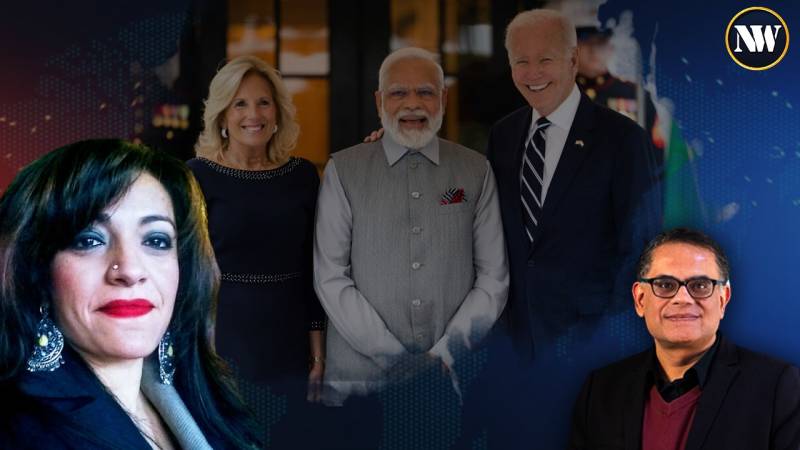The recent visit of Indian Prime Minister Narendra Modi to the United States ignited discussions about the evolving dynamics of international relationships. Dr. Ayesha Ray, an associate professor at King's College Pennsylvania, lends her expertise to shed light on the multifaceted implications of this visit, the shifting global order, and the complex challenges that lie ahead.
The visit was marked by a flurry of activities, agreements, and diplomatic exchanges. Beyond the pomp and circumstance, it underscored a pivotal juncture in the enduring strategic relationship between India and the United States. "This visit represents a culmination of over two decades of efforts to forge a deeper partnership between India and the U.S.," Dr. Ray remarks, highlighting the significance of the visit beyond mere ceremonial aspects.
A notable highlight of the visit was the technological and defense agreements, including the sale of 31 Predator drones to India. These agreements emphasize the growing defense cooperation and technology transfer between the two nations. Dr. Ray acknowledges the importance of these agreements in strengthening India's strategic position and equipping it for potential challenges in the Indo-Pacific region.
However, the narrative is not limited to bilateral engagements. Dr. Ray introduces an intriguing dichotomy: India's engagement as a counterweight to China. While the U.S. envisions India's role in this capacity, India's response to China's influence appears cautious. Dr. Ray suggests, "While the U.S. views India as a potential counterweight to China, India's actions suggest a more balanced approach." This distinction highlights the complexities of global relationships and each nation's unique considerations.
Beyond defense cooperation, the visit raised concerns about human rights and press freedom. A journalist's questioning of Prime Minister Modi resulted in backlash and harassment, shining a spotlight on India's democratic backsliding. Dr. Ray delves into the tension between realpolitik interests and democratic values, emphasizing the challenge of reconciling these aspects within international relationships.
The conversation extends to the Russia-Ukraine conflict, a geopolitical crisis with global implications. Dr. Ray discusses India's delicate position, rooted in historical ties with Russia, and the need to balance this with international norms. While calls for a peaceful resolution are evident, the complexity of India's defense partnership and energy considerations shape its cautious approach.
Looking ahead, Dr. Ray navigates the evolving global geopolitical landscape. A multipolar world order emerges, where major players like the U.S., China, and India wield influence. Dr. Ray emphasizes the significance of rising powers, non-state actors, and regional organizations in shaping the world order. "The threat of non-state actors, particularly in regions like South Asia, highlights the continued need for international cooperation against terrorism," she states, highlighting the ongoing challenges facing nations.
Dr. Ray's insights underscore the intricate web of international relationships, where strategic alliances coexist with complex realities. The discourse surrounding the visit and its implications provide a glimpse into the intricate dance of diplomacy, national interests, and global pressures.
As the world navigates this new era, nations grapple with defining their roles in an ever-changing landscape. The visit of Prime Minister Modi serves as a microcosm of these larger shifts, where countries seek to balance their domestic priorities with global responsibilities. Dr. Ray's analysis illuminates the nuanced dynamics at play, revealing that the choices made by nations today will reverberate far into the future.

